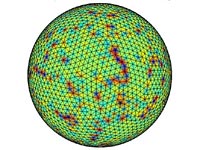Financial Mathematics - 8161
Program Summary
Faculty: Faculty of Science
Contact: http://www.maths.unsw.edu.au
Campus: Kensington Campus
Career: Postgraduate
Typical Duration: 1.5 Years
Typical UOC Per Semester: 24
Min UOC Per Semester: 8
Max UOC Per Semester: 24
Min UOC For Award: 72
Award(s):
Master of Financial Mathematics
Information valid for students commencing 2013.
Students who commenced prior to 2013 should go to the Handbook's Previous Editions
Program Description
Program Objectives and Graduate Attributes
The program focuses on the following skills:
- a sound grasp of the key concepts and methodologies of modern financial theory and related mathematical techniques,
- ability to apply the principles of finance, combined with knowledge of statistics and probability theory, to such topics as:
- modelling of market phenomena, computing prices of financial products, measuring and controlling financial risk,
- use of computer software, such as MATLAB, R, SPLUS and SAS, to perform computation of prices and hedges and statistical analysis of
- financial data,
- application of the knowledge and skills acquired to real-life problems arising in financial markets.
Program Structure
Students should also seek the guidance from the School at an early stage of study to ensure that the study stream being followed is best suited to lead to the project. In addition, admission to a particular project is subject to appropriate research and supervision resources being available.
Students who do not attain a WAM of 65 or higher in the first eight (8) courses of their program will be awarded the Graduate Diploma in Mathematics and Statistics (5659).
The total number of UOC required for the program is 72.
The project will be supervised by an academic staff member of the School in an area agreed to by the student and supervisor. The project could include a literature survey and a critical analysis of the topic area; or could be a small research project.
The core set of compulsory courses, listed below, is designed to give a deep knowledge of the fundamentals of financial mathematics with the special emphasis on financial modelling and pricing of financial derivatives.
Academic Rules
Fees
Entry Requirements
- completed a Mathematics or Statistics major within a Science and/or Mathematics program, or a degree in a related area;
- sufficient mathematical/statistical background, and an average above 65 in the relevant level III courses; and
- shown some evidence of the ability to undertake independent study.
Honours graduates in Statistics may be exempted from a maximum of one third of the courses and could complete the degree in one year of full time study.
In addition, students must have permission of the Head of School or Nominee. Prospective international students should note that this program has English language requirements.
Exit Provision
Area(s) of Specialisation









